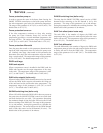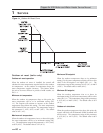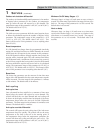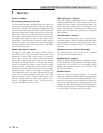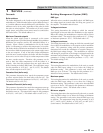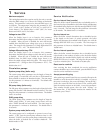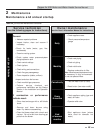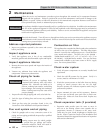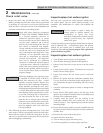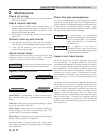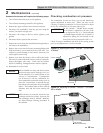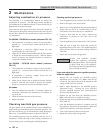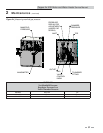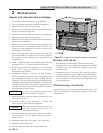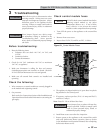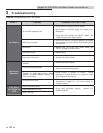
2 Maintenance (continued)
27
Check relief valve
1. Inspect the relief valve and lift the lever to verify flow.
Before operating any relief valve, ensure that it is piped with
its discharge in a safe area to avoid severe scald potential.
Read the Water Connections Section of the Installation and
Operation Manual before proceeding further.
Safety relief valves should be re-inspected
AT LEAST ONCE EVERY THREE YEARS,
by a licensed plumbing contractor or
authorized inspection agency, to ensure
that the product has not been affected by
corrosive water conditions and to ensure
that the valve and discharge line have not
been altered or tampered with illegally.
Certain naturally occurring conditions may
corrode the valve or its components over
time, rendering the valve inoperative. Such
conditions are not detectable unless the
valve and its components are physically
removed and inspected. This inspection
must only be conducted by a plumbing
contractor or authorized inspection agency
– not by the owner. Failure to re-inspect the
boiler relief valve as directed could result in
unsafe pressure buildup, which can result in
severe personal injury, death, or substantial
property damage.
Following installation, the valve lever must
be operated AT LEAST ONCE A YEAR to
ensure that waterways are clear. Certain
naturally occurring mineral deposits may
adhere to the valve, rendering it inoperative.
When manually operating the lever, water
will discharge and precautions must be taken
to avoid contact with hot water and to avoid
water damage. Before operating lever, check
to see that a discharge line is connected to
this valve directing the flow of hot water
from the valve to a proper place of disposal.
Otherwise severe personal injury may result.
If no water flows, valve is inoperative. Shut
down the appliance until a new relief valve
has been installed.
2. After following the above warning directions, if the relief
valve weeps or will not seat properly, replace the relief valve.
Ensure that the reason for relief valve weeping is the valve
and not over-pressurization of the system due to expansion
tank waterlogging or undersizing.
ƽ WARNING
ƽ WARNING
Copper-fin II/IIE Boiler and Water Heater Service Manual
Inspect/replace hot surface igniter
This unit uses a proven hot surface ignition module and a
hot surface igniter. The hot surface ignition module is not
repairable. Any modification or repairs will invalidate the
warranty.
Do not attempt to repair a faulty hot
surface igniter or ignition module. Any
modification or repairs may create
hazardous conditions that result in property
damage, personal injury, fire, explosion
and/or toxic gases.
ƽ WARNING
A faulty hot surface igniter or ignition module must be replaced
with an identical part. A specification igniter and ignition
module for this specific unit is available from your local
distributor. Do not use general purpose field replacement
ignition modules or igniters.
Inspect/replace hot surface igniters
1. Turn off main electrical power to the appliance.
2. Turn off main manual gas shutoff to the appliance.
3. Remove lower front door to gain access to the hot surface
igniter.
4. Locate the hot surface igniter. Disconnect the two power
leads to the hot surface igniter.
5. Loosen and remove the two screws used to attach the
igniter.
6. Remove the igniter from the combustion chamber door.
Use care, do not hit or break the silicon carbide igniter. Do
not contaminate the igniter by handling with oily or dirty
hands.
7. Check the replacement igniter for cracks or damage before
installing.
8. Ensure that the fiber gasket used to seal the base of the
igniter to the combustion chamber door is reinstalled to seal
the base of the replacement igniter.
9. Carefully insert the igniter into the opening of the
combustion chamber door and re-attach the two screws
removed in Step 5. Over-tightening may break the ceramic
mounting flange.
10. Ensure that the igniter gasket is properly installed and seals
the point of contact between the igniter and the combustion
chamber door.
11. Reconnect the power leads to the igniter.
12. Replace the lower front door.
13. Turn on main gas supply and main power.
14. Test fire the appliance to ensure proper operation.



